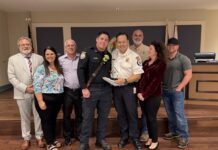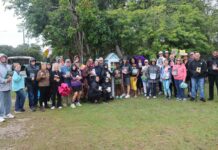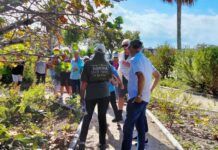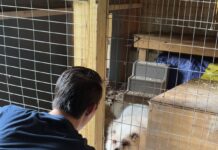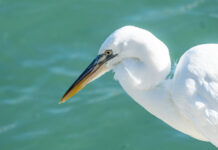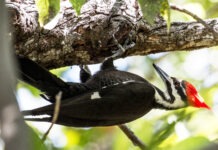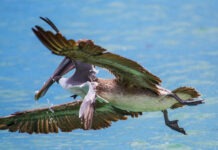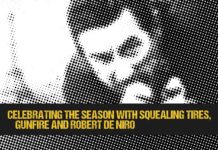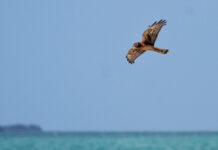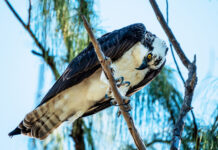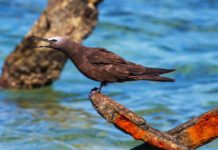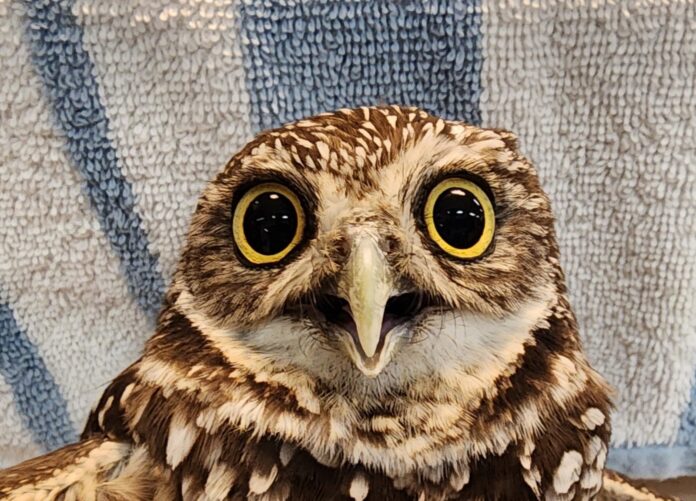
Time was, it was easy to find a burrowing owl in the Florida Keys. You would just go to Key Colony Beach (obeying the rabidly enforced 25 mph speed limit) and stop at this one particular corner lot. A sign in the corner declared “burrowing owls” with an arrow pointing downward to a foot-long length of PVC pipe, 4 inches in diameter. In that pipe would be a burrowing owl with big yellow eyes, blinking at you. But not always. Some days the owls would just sit on top of the sign and blink at you.
If, for some reason, the owls weren’t there – say they were out hunting or enjoying their ability to slip the bonds of gravity, as birds do – you could always take the short trip to Sombrero Beach and scan along the edge of the golf course. You had to work a little harder to find those birds, but often there would be a few sets. The golf course even adopted them as their mascot and put them on their signs.
I can’t remember the last time I saw the owls on that particular corner lot, but I stopped by one day around 2015 and a house had been built on the lot, the owls gone. I stopped at the city hall and asked if they had any idea where the owls might have gone and the woman working the front desk said that they’d been hanging out in her yard once in a while, and gave me her address.
The owl was actually sitting on her fence like some kind of movie prop.
I generally don’t find birds cute, but owls, they slay me. Especially burrowing owls, with their big round heads, their cartoonishly large eyes, and their long tails and skinny legs that make them look strangely like they are wearing the era-appropriate formal wear to sign the Declaration of Independence. I sat and watched that one for a few minutes, then headed down to Key West.
That was the last time I saw a burrowing owl in Marathon.
Looking at eBird reports, it seems the owls were last reported there in 2017. The owls at Sombrero Beach were last reported in 2015.
There are no concrete answers as to why they disappeared. Development is generally one of the usual suspects when bird populations decline, and is probably why that one nest in Key Colony Beach disappeared. But burrowing owls are usually pretty happy living on golf courses and undeveloped bits of land surrounded by development. They don’t seem to be averse to human activity, as long as people keep a little distance.
I gave a talk about peregrine falcons to the folks at the Marathon Rotary a couple weeks ago – they gave me a very nice pen, which I am currently declining to let anyone else borrow – and when I was done, I asked if anyone had seen any burrowing owls lately. They had not. Then I asked if anyone had any theories on what happened to them.
The prevailing opinion on the cause of their recent absence from the area? Iguanas.
For anyone somehow unawares, the green iguana population in South Florida has exploded over the last two decades. I remember taking the Florida Master Naturalist course at Fairchild Tropical Gardens around 2001 and seeing my first one, and then my first hundred, all on the same day. They were an invasive species, introduced by humans to an ecosystem in which they had no significant predators. And their population just exploded.
I suppose I should have realized they would be coming this way, but it didn’t immediately dawn on me. I saw my first one on No Name Key in 2003. I now have to chase them off my back porch in Key West on a regular basis, and I’ll see a dozen or two every time I ride my bike through the cemetery, sunning themselves on tombstones, crawling in and out of crypts. Recently I saw one burying eggs everywhere all over the softball field at Bayview Park.
The evidence for green iguanas driving out burrowing owls is anecdotal, but it makes sense. Adult male green iguanas are said to eat bird eggs. And even if they aren’t eating them, green iguanas have been recorded entering burrowing owl nests to shelter or lay their own eggs, driving out the burrowing owls.
Whether there is a way to reintroduce breeding burrowing owls into the Keys is questionable. It would be great to do, but if iguanas are a large part of the problem, it’s hard to hold out a lot of hope of it working in the long run.
This is not to say we don’t see burrowing owls in the Keys anymore. It’s just that they are usually migrants moving between the Caribbean and the mainland. I come across them at Fort Zach every couple years, usually out in the big open field. My favorite interaction with them was in that field one spring, when I wasn’t paying attention, and I suddenly found myself face to face with one, about 10 feet away. (Face to shin might be a more apt description.) We stared at each other for a moment, and I expected the bird to fly away. Instead it looked at me and stomped his feet several dozen times to make it clear I was on his turf. It was hilarious and adorable, at least if you look at it through an anthropomorphic lens, and I slowly backed away.
Looking at eBird data, they’ve been spotted in the Keys in the last two years at Crane Point Hammock in Marathon, in Layton, on No Name Key and in Tavernier.
And just last week the folks at the Key West Wildlife Center rescued one at Garrison Bight. The bird was waterlogged and on the edge of the avian equivalent of hypothermia, most likely exhausted by the effort of crossing over to the Keys from Cuba. They dried him off, warmed him up, hydrated and fed him, then the next day released him on his own recognizance on Fleming Key. It would be kind of cool if he stuck around.






